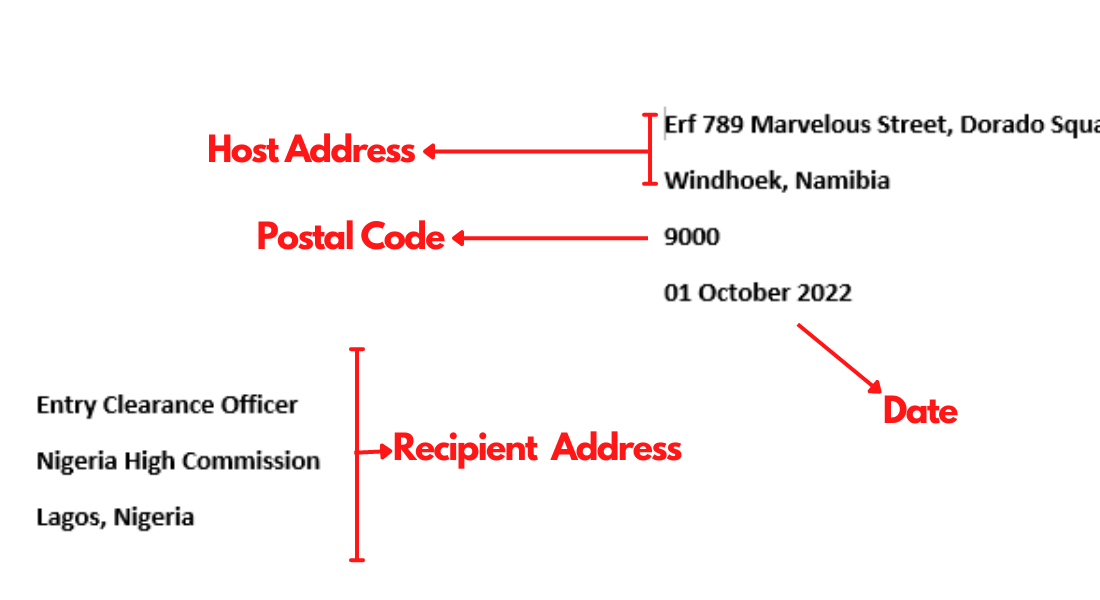What is an Invitation Letter?
Advertisement
An invitation letter is a formal written letter by the applicants’ host, stating that they are inviting the applicant to visit them in that country.
It’s very important to note that an invitation letter doesn’t guarantee the applicant a visa, it’s a plus but their supporting documents seal the deal.
The letter just shows that the visitor has a place to stay during the trip to the country. The invitation letter is addressed either to the applicant or the embassy.
What are the requirements to write a letter of invitation?
The letter should contain the following information:
1. State the host is willing and able to accommodate the visitor for the duration of their stay.
2. Specify the duration of your stay.
3. Relationship of the host to the visitor (family or friend).
4. Host full name and contact details.
5. Visitors’ full name and contact details.
6. Address of host.
7. Purpose of the trip.
8. Occupation of the host.
9. Occupation of Visitor.
10. Host status in the host country
11. Signature of the host.
What supporting documents a letter of invitation should have?
It is not required to have any supporting documents but it’s very thoughtful to attach the following:
- A scanned copy of the host ID or passport.
- Evidence of means of subsistence (If the host will Financially support the visitor).
- An itinerary of places planned to visit together.
- If the host takes time off from work, a supporting document to prove that.
Where to submit the Letter of invitation?
The host should scan and send the letter to the applicant, who will submit the invitation letter with other supporting documents at the embassy or consulate on the day of their appointment there.
How to write a Letter of Invitation for a visa application?
This is the easiest part of the visa application if you have rightly understood what it serves.
It’s a formal letter and should have the sender’s address which is your address (whoever is inviting the applicant) and the recipient’s address (embassy or consular office). It should be followed by a salutation, the heading, and then the body of the message. It should end with a conclusion and you’re signing off.
To start the letter I’ll write my address and the recipient’s address as shown below:
Advertisement
Followed by the greeting or salutation and then heading.
Then we get started with the body. The body should have the following:
- Introduce yourself to the home office. Give details about yourself, e.g. full name contact details, etc.
- Introduce the person you are inviting to the home office.
- Explain your relationship with the person you are inviting. Is it a friend or a relative?
- State how long the visitor will be staying with you, you have to ask the person what exact dates they put in their visa application, it should be the same as what you are writing.
- State what type of support you’ll be provided if any. Will you be providing their ticket fee, accommodation, food, their maintenance, and transport while in the country, or are you only providing them with their accommodation and that’s it? Based on what you are providing, the home office will expect to see some amount of money in your account. If you say you are only providing accommodation, they will expect the applicant to have money for their flights, and food when they get there. They would want to see that in the applicants’ bank accounts. You have to be specific and state what exactly you are sponsoring. If you say you will be sponsoring their accommodation or the person will be living with you, you need to provide your tenancy agreement (Rental agreement, ownership deed of the house, etc.)
- State the purpose of the visit. What is the person actually coming to do? Are they just visiting or they are coming to do something specific?
- State or list documents that have been enclosed or attached to the invitation letter.
- Thank the home office and sign off.
Example of an Invitation Letter:
For this example’s sake let’s say I’m inviting my cousin Paula Moore living in Nigeria to come to visit me in Namibia.







